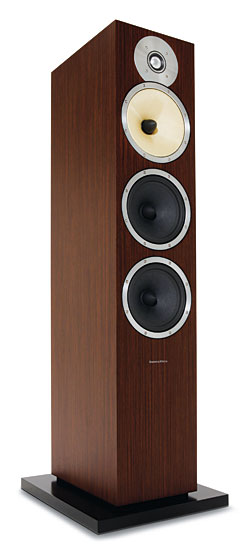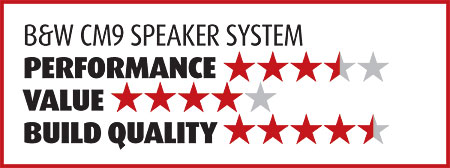B&W CM9 Speaker System Page 3
 I’m not suggesting that it isn’t convincing on high-demand material. The cannon fire on Master and Commander: The Far Side of the World is definitely jump-worthy on the B&W sub, and the big sandstorm plane crash scene from Flight of the Phoenix (2004) will curl your eyelashes.
I’m not suggesting that it isn’t convincing on high-demand material. The cannon fire on Master and Commander: The Far Side of the World is definitely jump-worthy on the B&W sub, and the big sandstorm plane crash scene from Flight of the Phoenix (2004) will curl your eyelashes.
The CM Centre 2 also does its work seamlessly. Dialogue is clear, and it doesn’t degrade appreciably at sensible off-axis listening positions. Midrange coloration is low. If the center can be said to have a character, it would again be a bit too much warmth in the upper bass. (This clearly isn’t helped by the center’s woofers being positioned 17 inches off the floor, as required by the location of my projection screen). The CM Centre 2 also has a rather laidback quality through the midrange. But these shortcomings were swamped by program material variations. The surrounds didn’t call attention to themselves unless the source demanded it.
The B&Ws provided me with a consistent, enjoyable performance. They never disappointed me, whether the source was two-channel music, action-heavy films, or multichannel music from video sources, such as Legends of Jazz (LRS Media), Mozart’s The Magic Flute (Opus Arte), or the musical Company. But if they have a special strength, it’s in how they handle multichannel orchestral soundtrack scores. Their inherent warmth and uniformity across the front soundstage, plus their well-matched timbral balance, never failed to impress me on this type of material. I can tolerate wide variations in how a speaker system handles a movie’s sound effects (not that I had to with the B&Ws!). After all, how many of us really know what the shattering of a plate-glass window or an exploding gasoline truck sounds like? But if a speaker system doesn’t get the music right, it takes me right out of the film. The B&Ws got it right.
As good as the CM9 system sounded without help, it benefited even further in my room from carefully applied DSP equalization. I hasten to add that I made all of the above observations—music and movies—without EQ. But when I applied the Audyssey MultEQ system in my Integra surround processor, the bass tightened up. I was no longer occasionally distracted by too much warmth, the dynamics had additional drive and impact, and the top end had more detail and air—all without trading off any of the system’s inherent strengths.
Conclusions
Some home theater speaker packages strive for maximum output at the expense of naturalness. Others add a biting edge to everything for excitement that’s not in the program material. They produce boom instead of bass, or they sacrifice natural music reproduction on the altar of overhyped, explosive sound effects.
None of these things describe this B&W system. The key word for the CM9 Theatre is balance. It’s not the highest-end system B&W makes—otherwise why would there be the 800 Series? But it does offer a balance of strengths on both music and movies, at a price that isn’t outrageous. And it’s a pleasure to live with over the long haul.

- Log in or register to post comments




































































